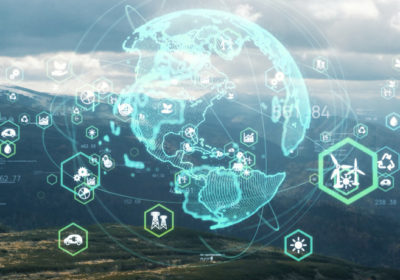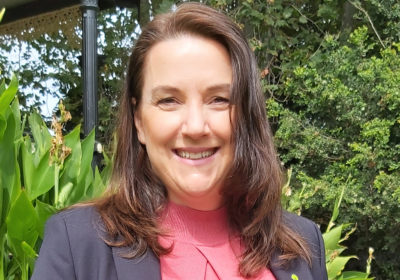
- Author: Mark Pesce | Author & Futurist
- Posted: August 21, 2023
How a Futurist Thinks About Climate Change
As the shocking Northern Hemisphere Summer of 2023 winds down – much of Canada consumed by bushfires, hundred-degree-Fahrenheit ocean waters just offshore of Miami, then a shockingly sudden and deadly tragedy in Maui – everything points to the “Inconvenient Truth” Al Gore tried to warn us about nearly two decades ago.
We appear to be rounding the ‘hockey stick’ corner of the temperature graph, heading (and heating) up.
We know how we got here. It’s time to think about what we do from here on in.
Futurists walk a fine line when speaking about such ‘difficult’ circumstances; scare people too much, and they become frozen into inaction, sometimes psychologically retreating into fantasy and conspiracy. Conversely, there’s always a temptation to minimise, downplaying the dangers – and here futurists risk letting people sleepwalk into an avoidable catastrophe.
To navigate such a sensitive topic with individuals calls for a ‘middle path’ approach, one that gets folks moving with just the right amount of motivation. For most people that centres on ‘agency’: we need to feel that we can respond meaningfully – and that our organisations and communities will support us in these meaningful acts. Agency is table stakes; without it, people will feel lost, anxious, and will withdraw. Creating a space for people to exercise their agency can release huge transformational energies.
People want to do the work – most just need a good opportunity.
How do you put those energies to work? What sorts of opportunities make sense?
Here we spot another fine line walked by Futurists; everyone wants to put the fire out – and that’s all to the good – but at the same time, there’s fire damage to be managed. Given limited resources (and attention spans) getting any organisation to pursue multiple goals – even closely aligned goals – can prove difficult.
The middle path here comes from clear and focused messaging: mitigation, to put the fire out; plus remediation, to clean up the mess.
Organisations tend to prefer mitigation over remediation – it looks more like ‘doing something’. Yet a clear-eyed assessment of risks to the business almost always favours remediation. Yes, it’s important to do everything we can to prevent things from getting worse; at the same time, we urgently need to insure against the worst of the consequences already ‘baked in’ to the climate. These two compelling, competing needs pull boards and C-suites this way and that, dividing their attention, effort, and effectiveness.
Decision making in a time of climate change needs to be stable, consistent and methodical – all of which becomes much more difficult if an organisation has consistently underprepared for the next climate disruption.
Those disruptions can be directly weather-related – a too-heavy rain, record-breaking heat wave, etc. – or they can be the next-order consequence of weather-related events: for example, increasing disruption in supply chains. The COVID pandemic taught organisations how to be resilient and flexible in the face of increasing intermittency; all of those skills need deepening and broadening. Organisations dependent on long and fragile supply chains will move to ‘onshoring’ and ‘friendshoring’, with critical components stockpiled, as supply chain management transitions to favour ‘uptime’ capacity (resilience, by another name) over cost efficiencies.
This decade has already seen inputs get more expensive, rising prices, a jump in inflation, and a macroeconomic environment that radically changed the focus and expectations of investors. We’re only in the early days of that shift; interruptions and intermittencies will grow more common as the climate continues to ‘surprise’ us, and we head toward a state of affairs where interruption will be the rule – and continuity the exception.
Organisations that build a deep reservoir of capacity and use it to ‘prepare for the worst’ while taking full advantage of the opportunities of the ‘quiet times’ will rarely find themselves overwhelmed by the pace of events. As the climate displays an increasing range of variety, those organisations will be able to deploy their capacities tactically. But that’s not a one-and-done strategy. Instead, it needs continuous re-evaluation, so that the organisational reservoir of capacity never empties – and this demands constant attention in a time of unpredictable extremes.
First and foremost: keep calm and carry on. Panic helps no one – and is self-defeating. Do what you can, do as much of it as you can, and do it sensibly. This is not a burden meant to be shouldered by individuals, or even individual organisations. This is a collective burden, and for that reason we should approach it with the ‘broad shoulders’ of collective action.
It’s that ‘collective’ which will see the biggest change within this decade. The demand for visible transformation of both public and private organisations by the populace will increasingly narrow the scope of ‘acceptable’ activities while simultaneously raising the costs for being found ‘offside’. That could look like bad press, boycotts, even Royal Commissions. As the crisis widens, public tolerance for behaviours seen as against the public interest will evaporate. It will be risky to be caught on the wrong side of that shift in public perception – and it could eventually become something an organisation would not survive.
When people feel they have agency, they will not lash out. When organisations prepare themselves for the worst, they will not be overwhelmed. All of this means that we must assume full responsibility for our future, while simultaneously bearing the burden (and the costs) of our past.
Whether or not we personally contributed to the world-as-it-is, we all wear it, and we all must do something about it. Fortunately, we know how to do it – and do it well.
We’ve got this – and we need to keep that knowledge front of mind in times ahead.






